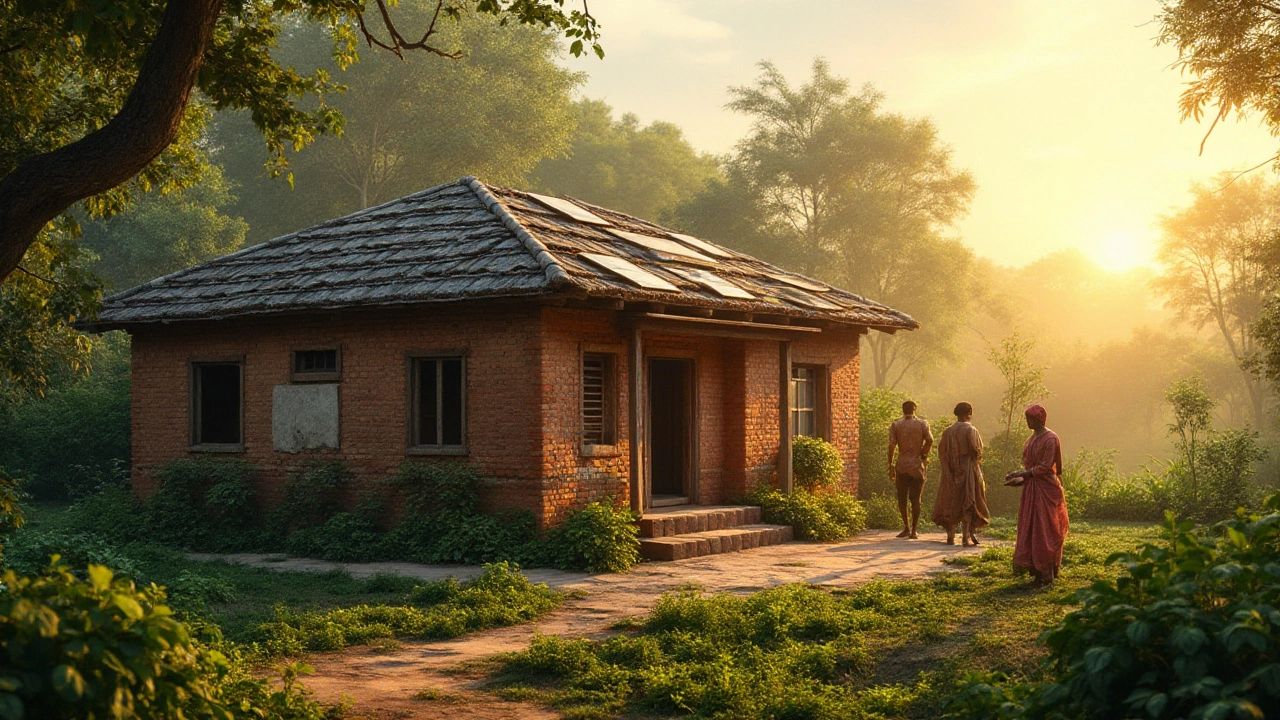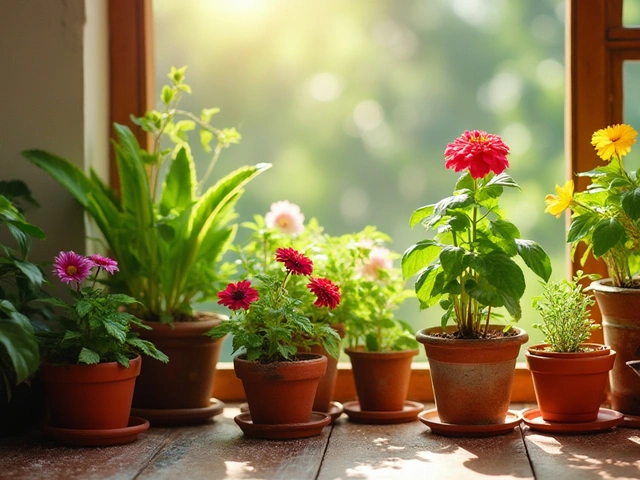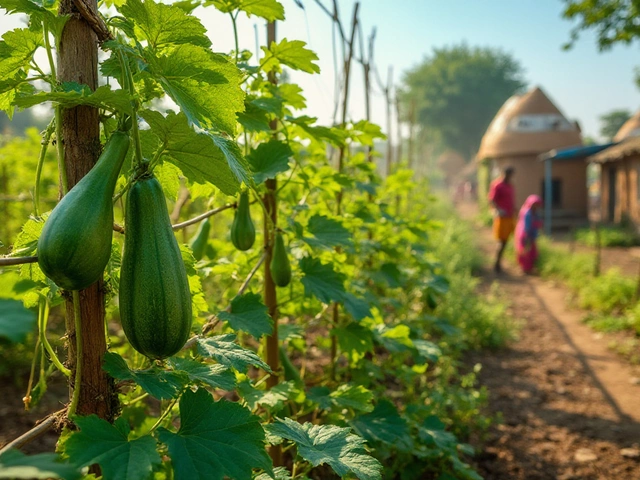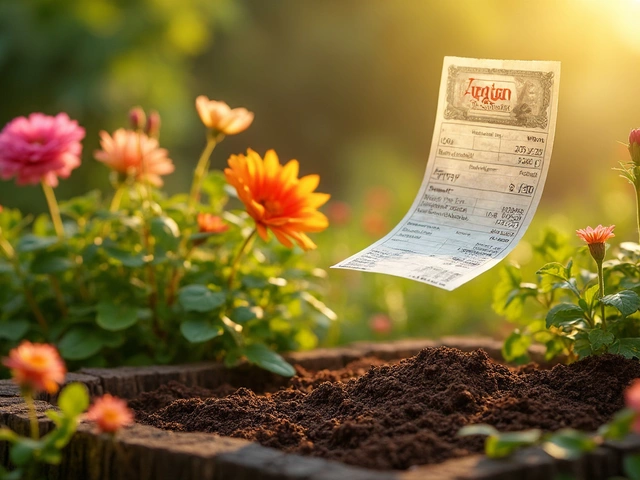Imagine waking up in a home that breathes along with the trees, where the walls tell stories of recycled innovations, and nature greets you at your doorstep. Building an affordable eco-friendly house isn’t just about cost-saving; it is about creating a harmonious living space that reduces environmental impact and nurtures the soul.
With the spotlight on sustainability, finding cost-effective ways to integrate eco-friendly solutions into home building has never been more crucial. Whether you're looking to use recycled materials, achieve energy efficiency, or plan a garden that supports local ecosystems, there are endless possibilities that blend affordability with sustainability.
This guide aims to explore simple yet impactful strategies to help you build a green haven, bringing ideas that respect both budget and Earth. Dive into creative solutions that can redefine conventional concepts of homebuilding. Each step you take can lead to a more sustainable future for you and generations to come.
- Sourcing Sustainable Materials
- Energy Efficiency on a Budget
- Designing an Eco-Friendly Layout
- Incorporating Sustainable Gardens
Sourcing Sustainable Materials
The journey toward constructing an eco-friendly house begins long before the foundation is laid. It starts with the meticulous process of sourcing materials that have a reduced impact on our planet while still offering durability and insulation. A crucial first step is considering materials that are either recycled or have a low energy manufacturing process. Bamboo, for instance, has become a superstar in green architecture due to its rapid renewability and strength. It grows faster than most trees, making it an easily replenishable resource envied by many eco-designers. Alongside bamboo, reclaimed wood offers a second life to timber that would otherwise end up in a landfill, while providing character and history to your home structure.
Concrete might not initially scream sustainability, yet innovations like fly ash or slag, which are byproducts of other industries, make it an unexpected ally in the zero-waste crusade. Alternative options like straw bales and rammed earth play into the strengths of natural insulation and minimal processing. The charm lies in their simplicity, harkening back to ancient building methods that have gradually made a resurgence in the green housing movement today. Emphasizing natural stone can also reduce environmental impact; it possesses a timeless quality and is recyclable, withstanding lifetimes of changes while being thoroughly rooted in nature's cycle.
One cannot overlook the potential of salvaged materials. These include everything from old bricks and glass to roofing tiles, each bringing a unique texture and pattern to your sustainable gardening aesthetics. What’s more, utilizing salvaged materials naturally limits the resources needed for new production, preventing unnecessary energy use. Former President Jimmy Carter once remarked,
"To draw people of all kinds together in the context of Habitat for Humanity construction projects gives all of us a sense of worth and purpose."Embracing this community spirit can also be reflected in how you gather resources for a green home, fostering a network where reused and locally sourced materials create active participation in sustainable living.
For those willing to dig a little deeper into data, a green home might include looking at energy consumption related to the materials you use. Keeping tabs on embodied energy—the total energy required to produce the material—can significantly steer selection. Consider the difference in energy needed to produce aluminum compared to wood; the former can have more significant emissions due to its energy-intensive production. Where possible, choose materials with low embodied energy and favor suppliers who operate close to home, cutting down on transport emissions and supporting the local economy. The stats from a Global Building Performance Network study revealed that using locally sourced materials can cut a building’s carbon footprint by 20-50%, a staggering incentive for those pondering green alternatives.
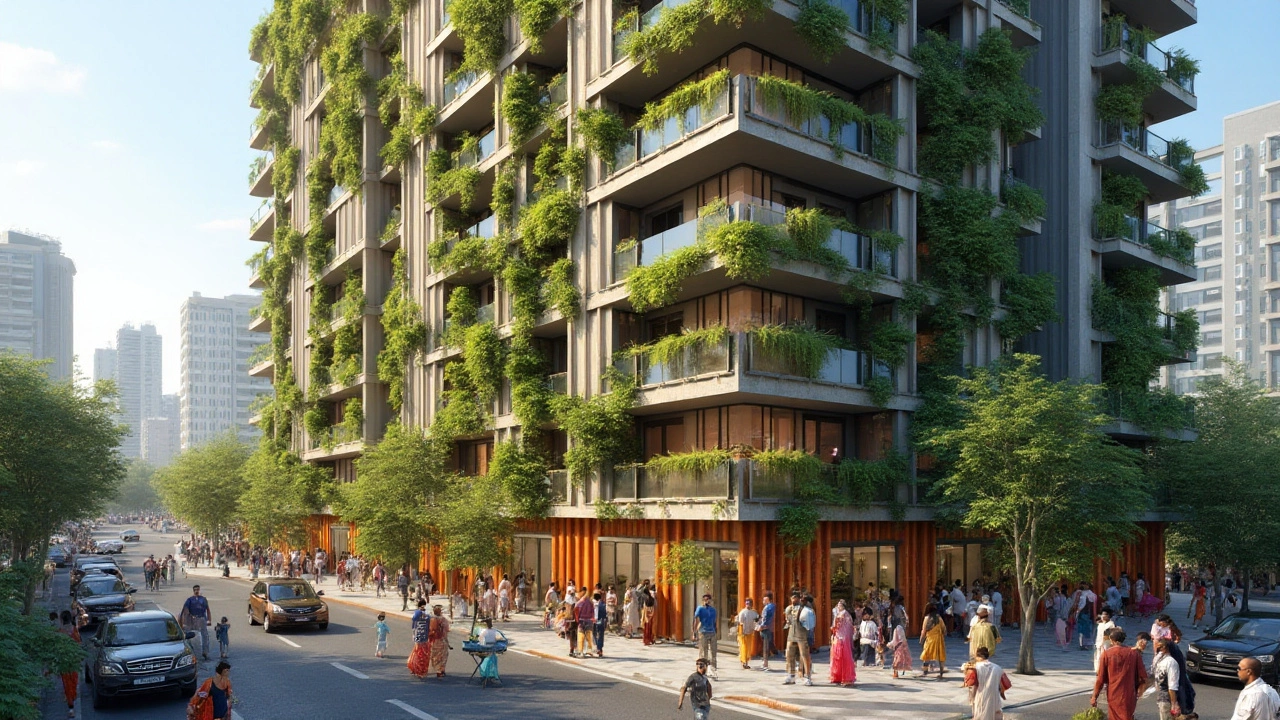
Energy Efficiency on a Budget
Energy efficiency is a cornerstone of any eco-friendly house design. It is about making the most of what's available without overburdening the planet or your wallet. For a start, consider the immense impact of proper insulation. Insulation keeps your home cozy in the winter and cool in the summer, reducing reliance on heating and cooling systems. Materials such as reclaimed denim or sheep's wool are excellent eco-friendly alternatives to synthetic fibers. Investing in good insulation can seem costly upfront but the savings in energy bills over time make it one of the best investments for a sustainable living space.
Windows are another critical aspect where efficiency can be optimized. Consider installing double or triple-glazed windows that are Energy Star rated. These reduce the transfer of heat and cold, ensuring interior temperatures remain stable with less energy consumption. Pair these with heavy curtains made from recycled materials, which can act as an additional layer of insulation. To take it further, strategically position your windows to maximize natural light during the day, which reduces the need for artificial lighting. According to Energy.gov, natural lighting can reduce lighting energy usage by 75%. As the saying goes, "The greenest energy is the energy you don't have to produce."
Harnessing renewable energy is another essential step. Solar panels have become significantly more affordable and can be installed on various roof types. With tax incentives and rebates available in many regions, the initial costs can be offset, making solar energy a feasible option for budget-conscious builders. Couple solar panels with energy-efficient appliances to get the most bang for your buck. Modern options include appliances with a high 'energy-efficient' rating that use less power to operate. Saving electricity doesn't just mean cutting costs; it creates a sustainable home environment that's kinder to the planet.
"A major goal in the design of green homes is to reduce energy needs through intelligent design and energy-efficient systems," states the National Renewable Energy Laboratory. This encapsulates the essence of our journey towards affordable sustainability.
Lighting is often overlooked in energy-saving conversations, yet it plays a significant role. LED bulbs, although slightly pricier than their incandescent counterparts, consume about 75% less energy and can last up to 25 times longer. This longevity means fewer replacements over the years, which cuts down on waste. Additionally, using motion sensors in rarely occupied rooms like bathrooms or garages can further conserve energy by ensuring lights are only used when necessary.
Lastly, consider implementing a smart thermostat. These modern devices learn your preferences and adjust settings to maintain comfort while using less energy. They provide smart ways to reduce energy consumption, like automatically lowering the temperature when everyone leaves the house. It's a lifesaver for those aiming to blend technology with ecological care. Emphasizing the use of renewable resources, efficient design, and intelligent devices is the key to crafting a budget-friendly, energy-efficient home.
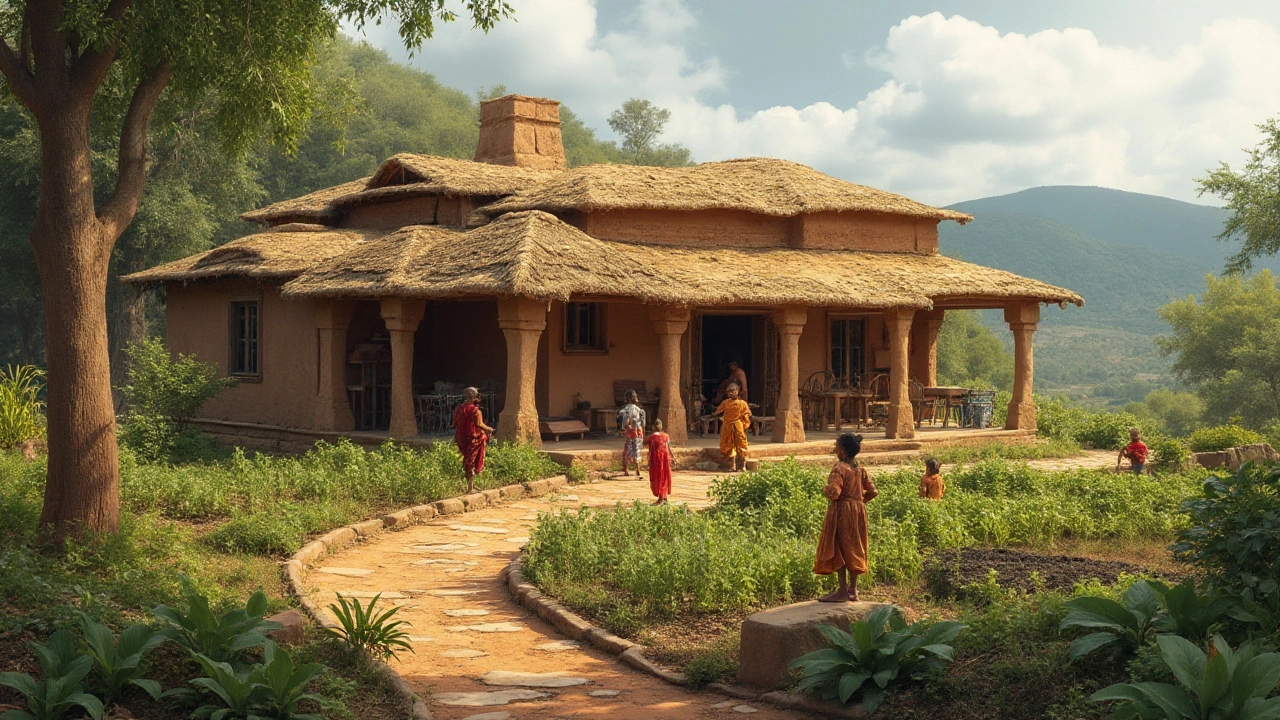
Designing an Eco-Friendly Layout
Creating a sustainable home starts with the foundation; it requires meticulous planning and deliberate decision-making. One key aspect of designing an eco-friendly house is ensuring that the layout optimizes natural light, which reduces the need for artificial lighting and saves on energy costs. Large windows strategically placed can harness sunlight during the day, a concept known as passive solar design. This not only warms your living space but also brightens it, creating a more inviting environment. Likewise, consider the orientation of your home. Incorporating open floor plans can help with natural airflow, decreasing the reliance on mechanical ventilation systems and promoting a cooler atmosphere during warm months.
When developing the layout, think about how each room functions in harmony with the others, and how you can minimize wasted space. Multi-functional areas, such as living rooms that can double as guest rooms or offices that transform into study spaces for children, can eliminate the need for additional construction. This not only conserves resources but also embraces a philosophy of efficiency that is central to green living. Another consideration is the use of modular furniture, which provides flexibility and supports a minimalist design, ensuring spaces remain uncluttered. Indeed, as the renowned architect Frank Lloyd Wright famously suggested, "Study nature, love nature, stay close to nature. It will never fail you."
Incorporating elements like green roofs and living walls within your sustainable gardening scheme can also be part of your home’s design blueprint. These features not only enhance insulation but also contribute to biodiversity, improving air quality and providing habitats for small wildlife. Additionally, integrating rainwater harvesting systems helps in the conservation of water, utilizing resources efficiently by directing runoff to your garden or for use in irrigation. A home that takes care of its water needs autonomously is a step towards sustainable independence.
When it comes to building a green home, every detail counts—from the recycled materials used in construction to the energy-efficient appliances installed within. Intentionally designing for adaptability, future-proofing your layout, is an equally wise investment. This versatility ensures that your eco-friendly abode can sustain shifts in family dynamics and lifestyle changes, sparing both budget and resources. Incorporating technology, such as smart thermostats that learn and adapt to your living patterns, can lead to considerable energy savings. A comprehensive approach, uniting both the traditional wisdom of utilizing spatial harmony and modern innovations, will guide you through crafting a home that stands as a testament to sustainable architecture.
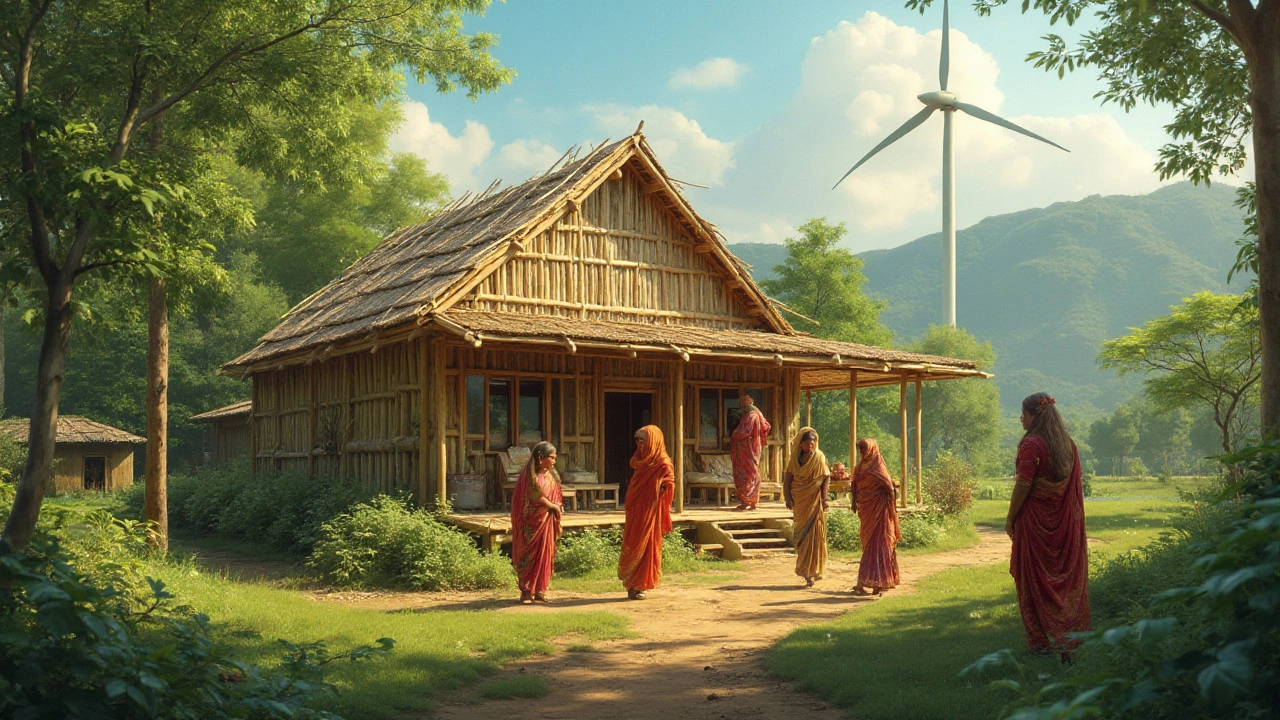
Incorporating Sustainable Gardens
Creating a garden that is both sustainable and lush is like building a tiny ecosystem in your backyard. The principles of sustainability encourage us to reuse resources, work with local climates, and, importantly, support biodiversity. An eco-friendly garden doesn't just offer visual appeal but serves as a refuge for pollinators and other beneficial species. When considering sustainable gardening, think about the cycle of life—the earth, plants, insects, and even the seasons play critical roles in creating harmony. Start by assessing the sunlight and water conditions of your space, which dictates the kinds of plants you can grow effectively without excessive external inputs. Getting to know your soil is essential. Conduct a simple soil test to understand its composition and nutrient levels. Adding organic matter like compost not only enriches the soil but helps it retain moisture and suppress weeds.
Once your soil is ready, choose native plants whenever possible. These are species naturally adapted to your local climate and soil, and they typically require less water and maintenance. Not to mention, they serve as vital host plants for local wildlife. Consider incorporating a mix of perennials and annuals to add diversity and resilience to your garden. Using layered planting techniques, where you grow plants of varying heights, maximizes biodiversity. The idea is to develop a multitiered habitat that accommodates different species of plants, insects, and birds. This layout can transform even a small garden into a thriving micro-habitat.
Water conservation is another critical aspect of sustainable gardening. Implementing a rainwater harvesting system is a wonderful way to reduce your reliance on municipal water. Collect water from rooftops and store it in barrels for later use—it not only saves water but also reduces runoff that can cause erosion and pollution. Drip irrigation systems further optimize the efficient use of water by delivering moisture directly to your plants' roots. Mulching is also indispensable in sustainable gardening— it retains soil temperature, prevents erosion, and keeps weeds at bay while decomposing material enriches the soil.
Interplay between plants and insects is an essential symbiotic relationship to capitalize on for a robust garden. Grow a variety of flowering plants to serve as magnets for bees, butterflies, and other pollinators. Doing this also invites predatory insects, which are natural pest controllers. Embrace companion planting; some plant pairings can bolster each other’s growth or repel common pests. For example, planting marigolds near tomatoes can deter nematodes, while beans and corn offer each other mutual support.
A fascinating insight by the Royal Horticultural Society reveals that "creating a pond can radically increase the amount of wildlife in your garden."
Adding a small pond supports a diverse range of fauna, from frogs to dragonflies. A pond also boosts your garden's ecosystem and maintains the water cycle within your green space. Finally, sustainability is also about your own practices. Commit to organic gardening by avoiding synthetic pesticides and fertilizers. Opt for natural alternatives like neem oil or diatomaceous earth for pest control. Regularly rotating your crops helps prevent soil depletion and reduces disease over time. Remember, building a sustainable garden isn't just for short-term gain but is a way of living that nurtures the planet while enriching your immediate environment.
